I recently took a trip to Europe where I traveled on 12 trains between seven cities, so I decided to invoke a favorite US planner pastime and compare US transit to that of international countries and see how we can make our own transit even better.
Train 1: Charles de Gaulle Airport – Strasbourg
Distance: 237 miles
Travel Time: 2 hours
US Comparison: DC to New York City (3.5 hours on Northeast Regional or 2 hours 50 minutes on Acela)
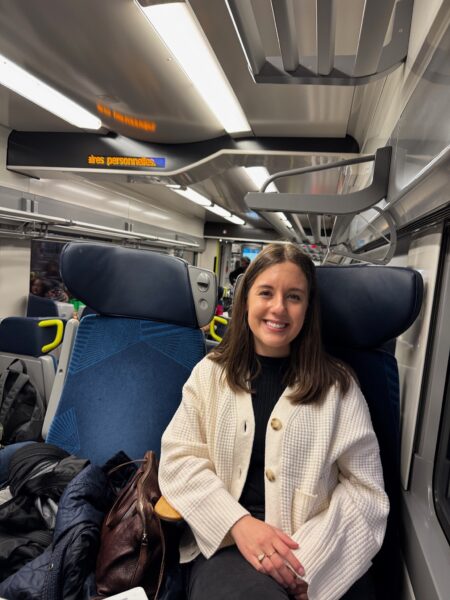
The first train of the trip was on the Train à Grande Vitesse (TGV), France’s famed high-speed trains . The TGV network connects several European cities—including Paris, Brussels, Strasbourg, Munich, Lyon, Milan, Nice, Marseille, Toulouse, and Bordeaux—with trains that can run at speeds up to 200 miles per hour. The French National Railways (SNCF) started developing the TGV network in 1966, with the first commercial service in 1981 between Paris and Lyon. TGV served 126 million riders in CY 2024, while—in comparison—Amtrak served 32.8 million riders in FY 2024. Brightline and the Acela are the closest we can get to the TGV in the US, but we still have a long way to go.
Trains 2 and 3: Strasbourg – Colmar and back
Distance: 40 miles
Travel Time: 25 minutes
US Comparison: DC to Baltimore (32–40 minutes on Amtrak, 52–60 minutes on MARC)
Colmar is a popular day trip from Strasbourg, made easier by the fact that trains operate between the two cities every 20 minutes. We managed to catch one earlier than we
planned and were able to hop on and buy our tickets while on the train—talk about convenient!
Trains 4-7: Strasbourg – Reims via Champagne-Ardenne and back
Distance: 174 miles
Travel Time: 90 minutes
US Comparison: DC to Williamsburg (3 hours 45 minutes on Amtrak)
We hopped on another TGV from Strasbourg to Champagne-Ardenne where we waited about 15 minutes for a ten-minute trip to Reims. The schedules appeared to be timed, so anyone making this same transfer would not have to wait more than 20 minutes.
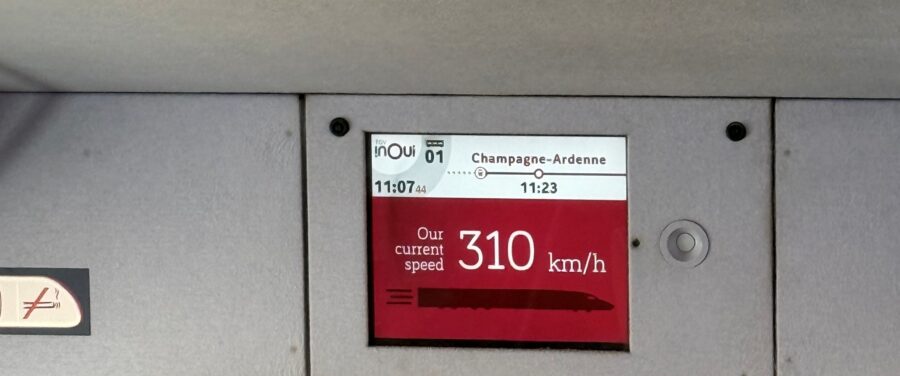
My favorite part about this TGV was the screen that tells you how fast the train is going. I managed to take a photo when the train was going 310 kilometers per hour (192 miles per hour)! While waiting at the Champagne-Ardenne station, we saw some TGVs pass through without stopping at such a mind-boggling speed—it felt like riding a roller coaster even though we were standing in one place!
Train 8: Strasbourg – Basel
Distance: 72 miles
Travel Time: 75 minutes
US Comparison: DC to Martinsburg (1 hour 40 minutes on Amtrak)
France and Switzerland are both part of the Schengen area, meaning there is no passport control between the two. It is amazing how easy it is to travel between different countries!
Trains 9-11: Basel – Annecy via Bern and Geneva
Distance: 143 miles
Travel Time: 4 hours
US Comparison: DC to Philadelphia (90 minutes–2 hours on Amtrak)
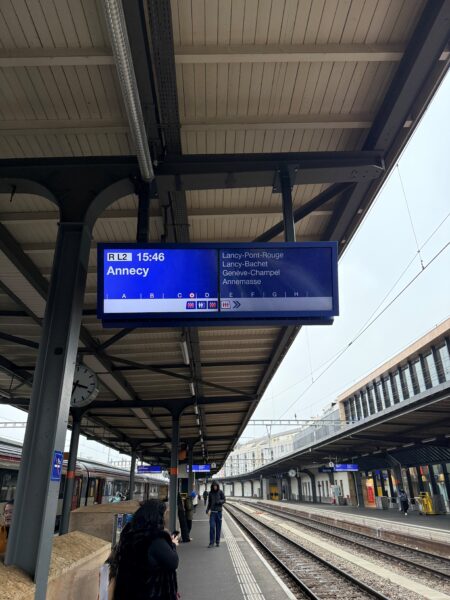
Finally, a train journey that takes longer in Europe than in the US! The main holdup on this trip is the travel between Geneva and Annecy. They are only 21 miles apart, but a 90-minute trip because the train has to go around the Alps. It did have a beautiful view though!
When we found out this trip would require two transfers, we decided to turn it into a half-day trip to Bern. Breaking up the trip and exploring the city made it really fun and felt like even more of an adventure. We could easily leave our luggage in the Bern train station, so we didn’t have to drag it around, which is also a feature many train stations in the US have!
The tickets for the Swiss Federal Railway (SBB) trains from Basel to Bern did not have specific times on them, so the tickets were valid for any trip that day. In the US, this is one of my favorite features of MARC service—tickets don’t have times and don’t expire for six months! It’s perfect for a day of exploring Baltimore when I don’t know what time I will be leaving in the evening.
Train 12: Annecy – Lyon
Distance: 62 miles
Travel Time: 2 hours
US Comparison: DC to Harpers Ferry (1 hour 11 minutes on Amtrak)
Trains between Annecy and Lyon only have one track and often don’t exceed 75 miles per hour, causing the trip to be about 30 minutes slower than driving. However, I’d still choose a train over driving any day, especially in a foreign country, due to the ease and comfort.
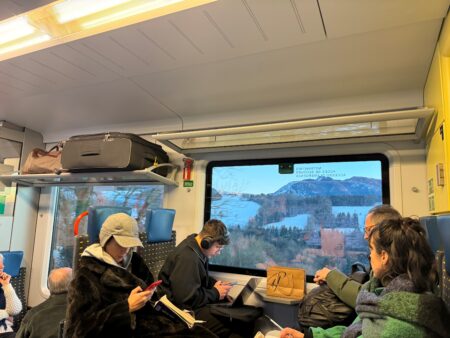
One of my favorite parts about this trip was seeing all the different layouts and colors of the train seating. Sometimes I was in single-seat row, other times I was in a two-seat row, and occasionally my parents and I sat around a table facing each other. None of our trains looked the same!
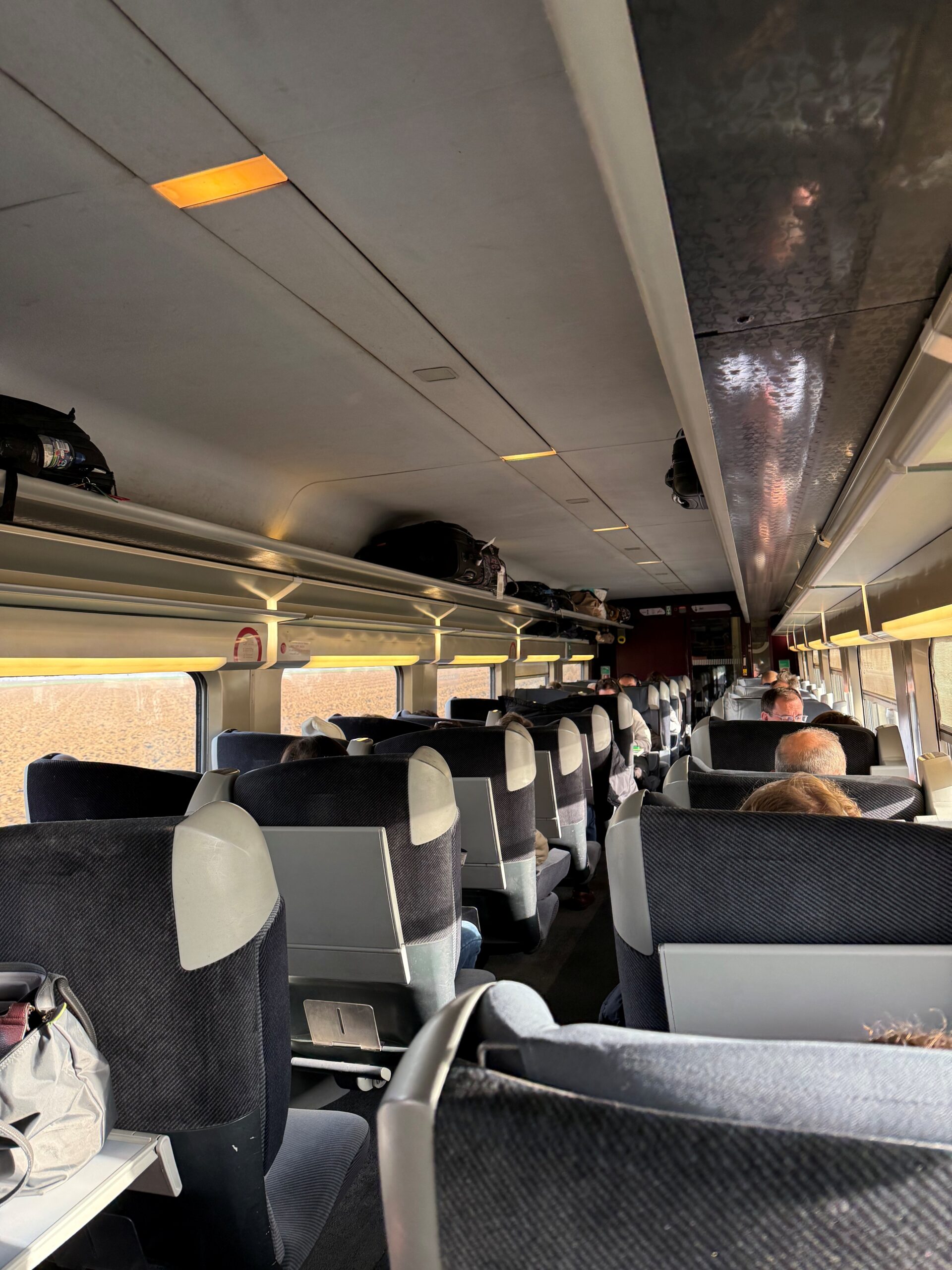
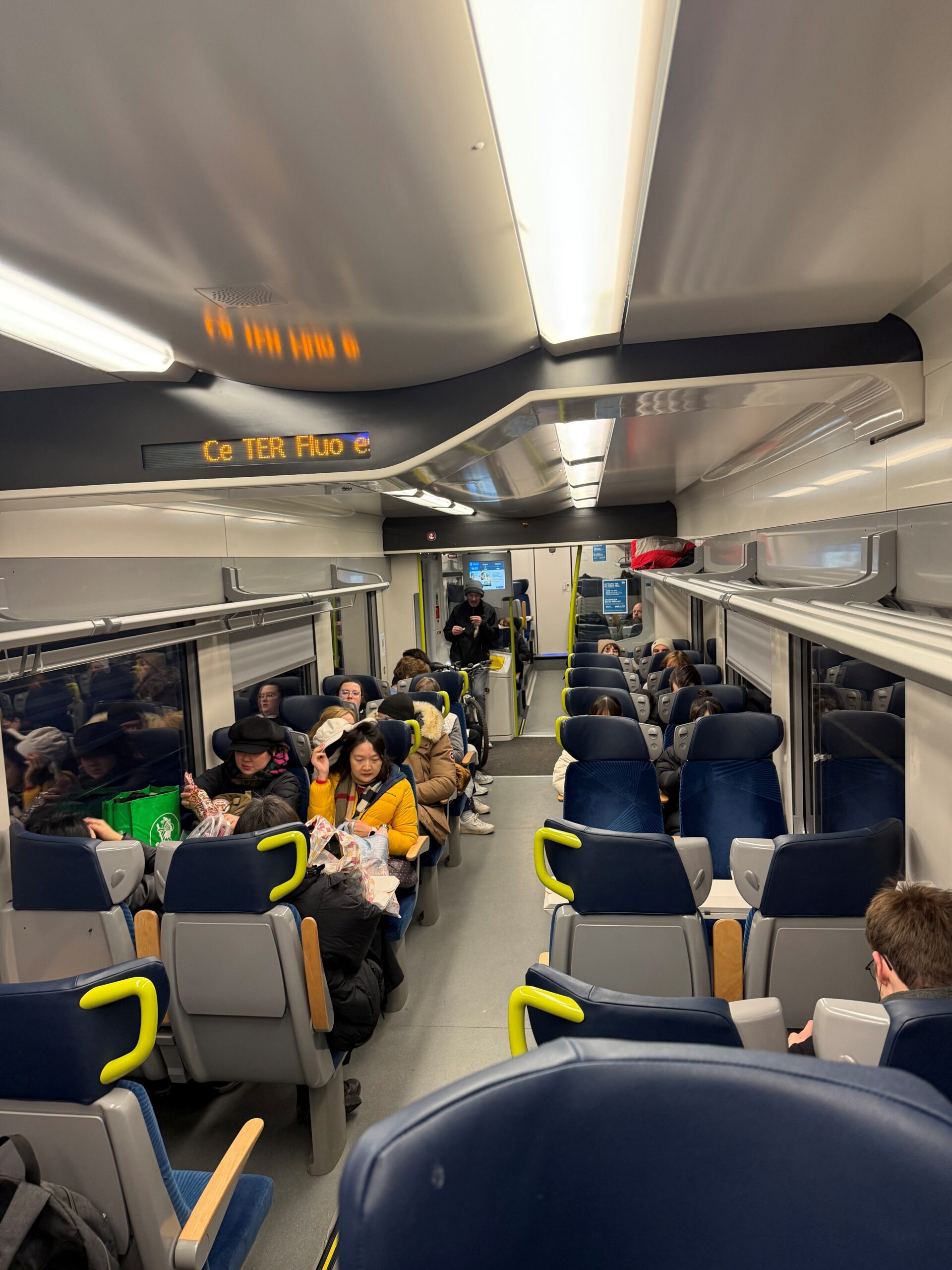
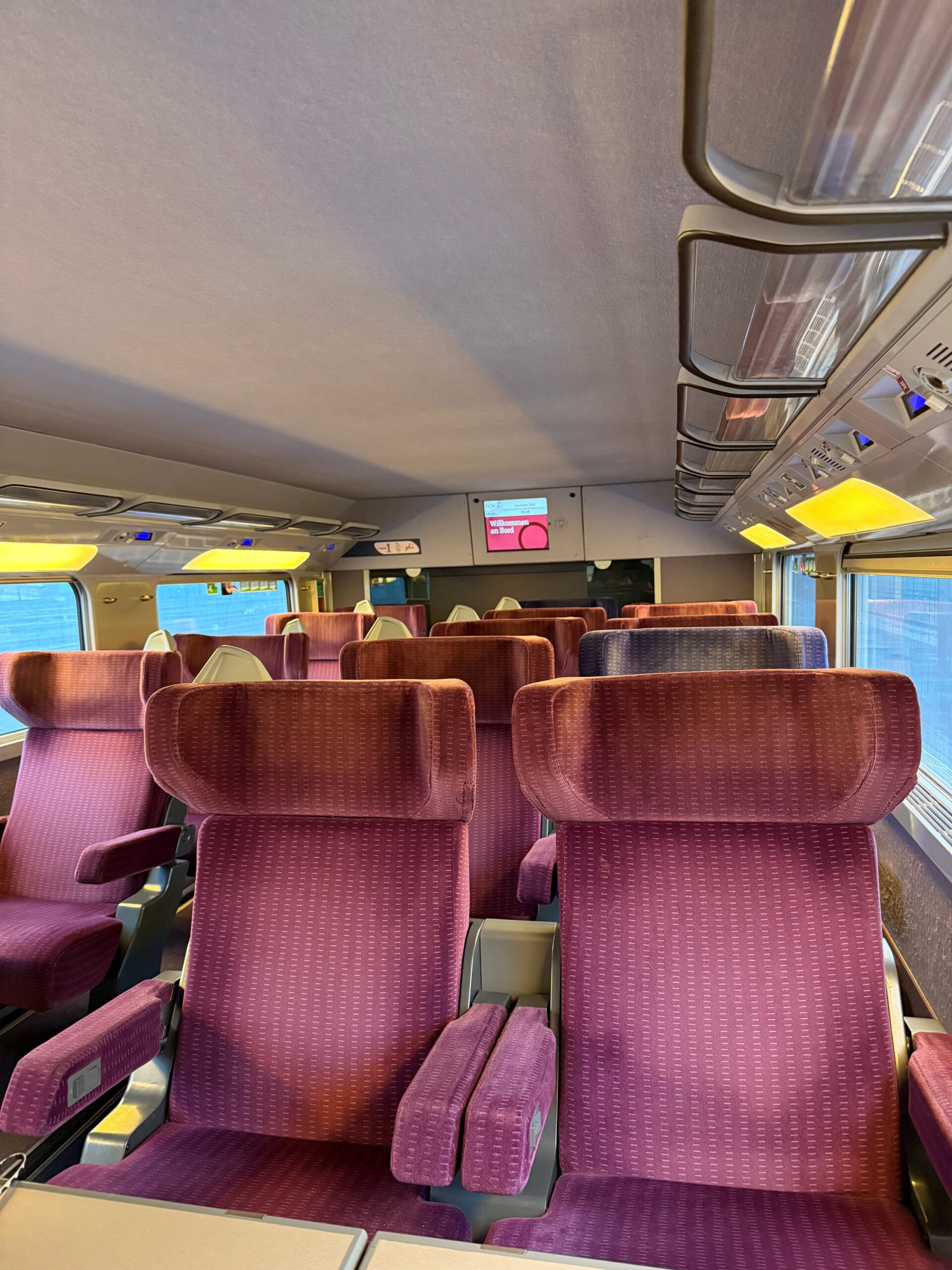
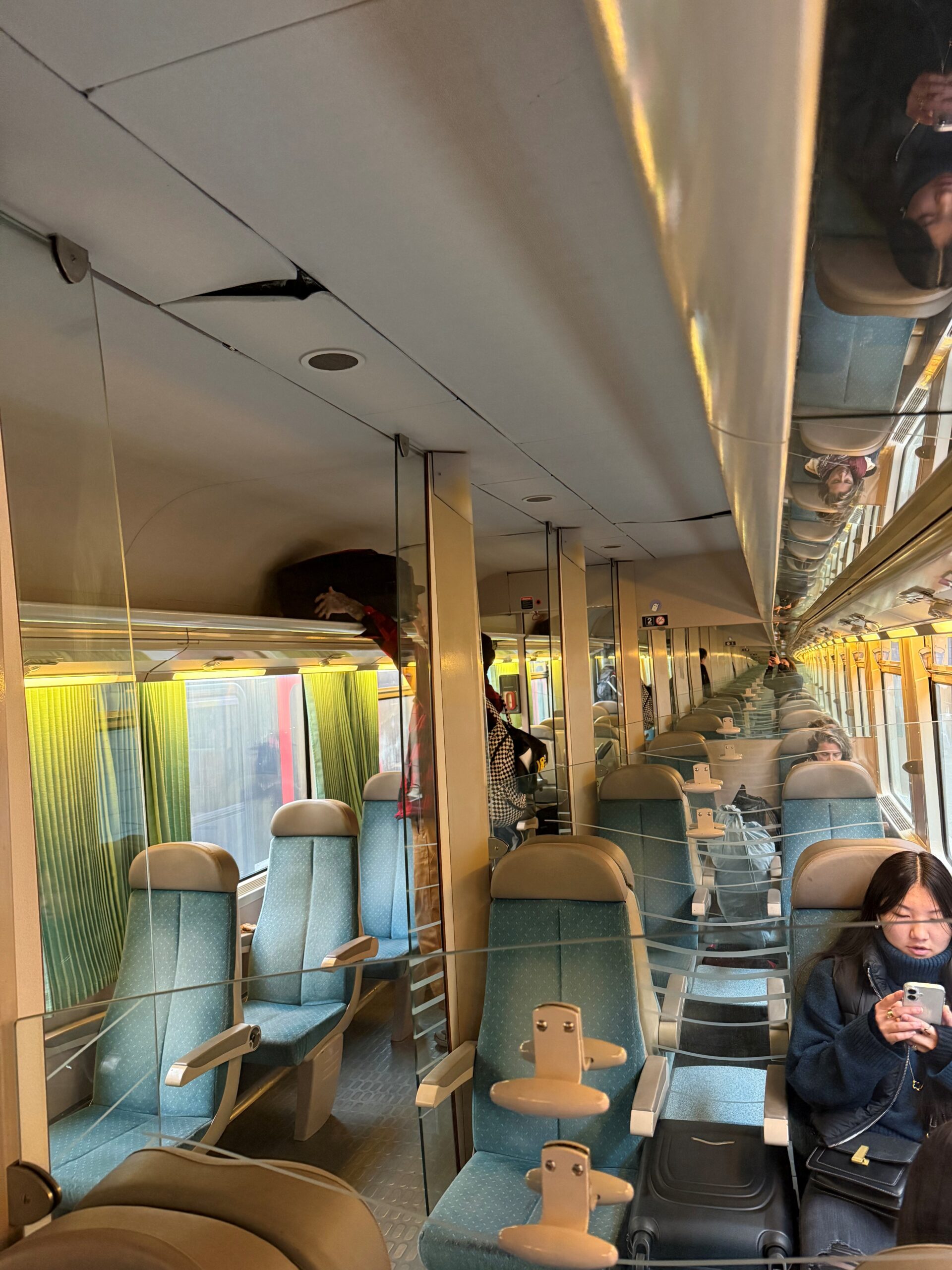
In a country where transportation accounts for the largest portion (28 percent) of greenhouse gas emissions—9 percent of which come from aviation and 57 percent of which come from cars—the US could do a lot of good by investing in, and encouraging more trips be taken by, rail. In May 2023, France banned domestic flights where train alternatives exist if the trip is under 2.5 hours. Although they created too many exceptions for the law to have a huge effect on greenhouse gases, it’s a great step in the right direction. To anyone reading this—please take the train when you can and continue to support Amtrak expansion so we can nudge ourselves a bit closer to all that SNCF and other international countries have achieved!